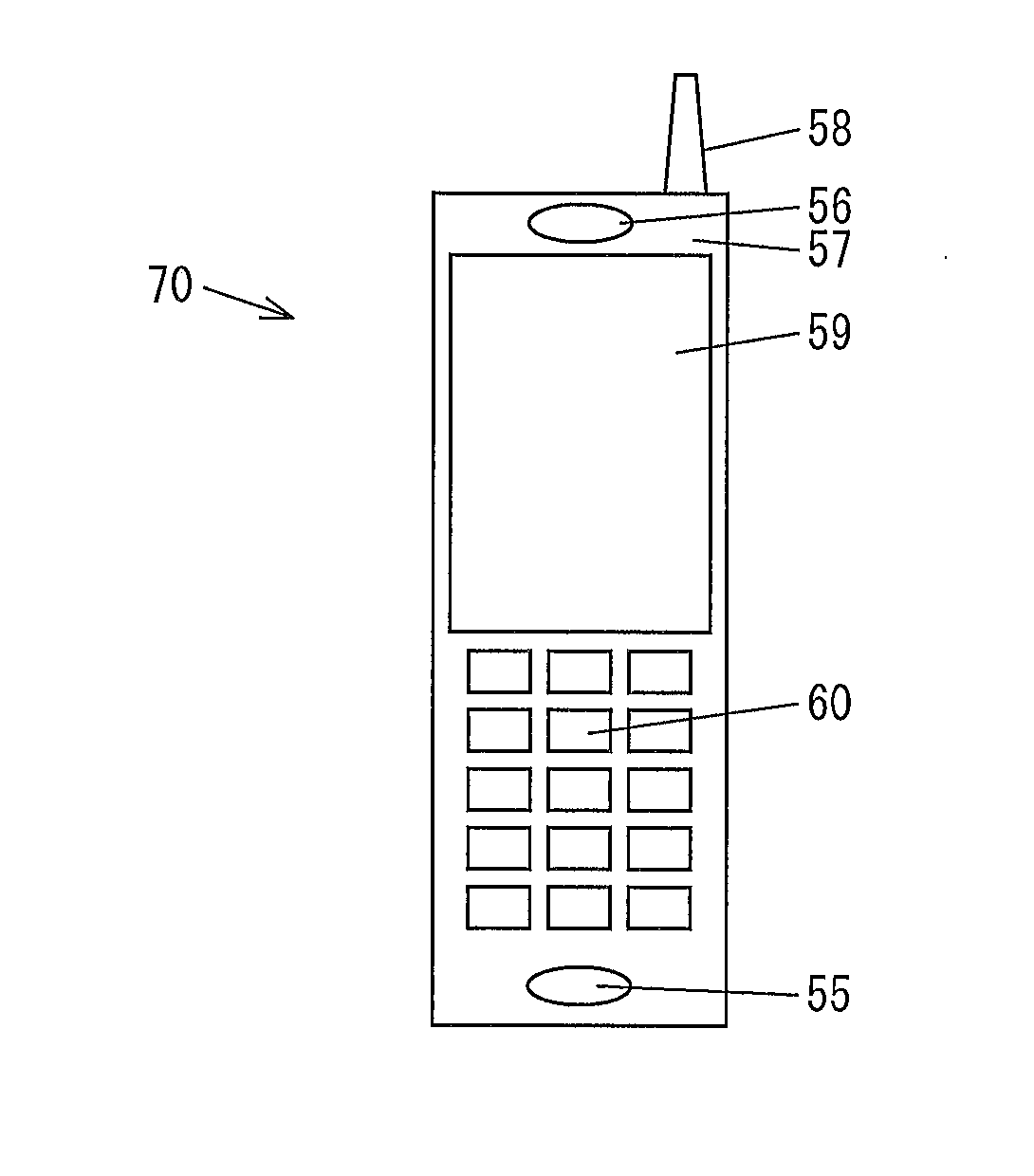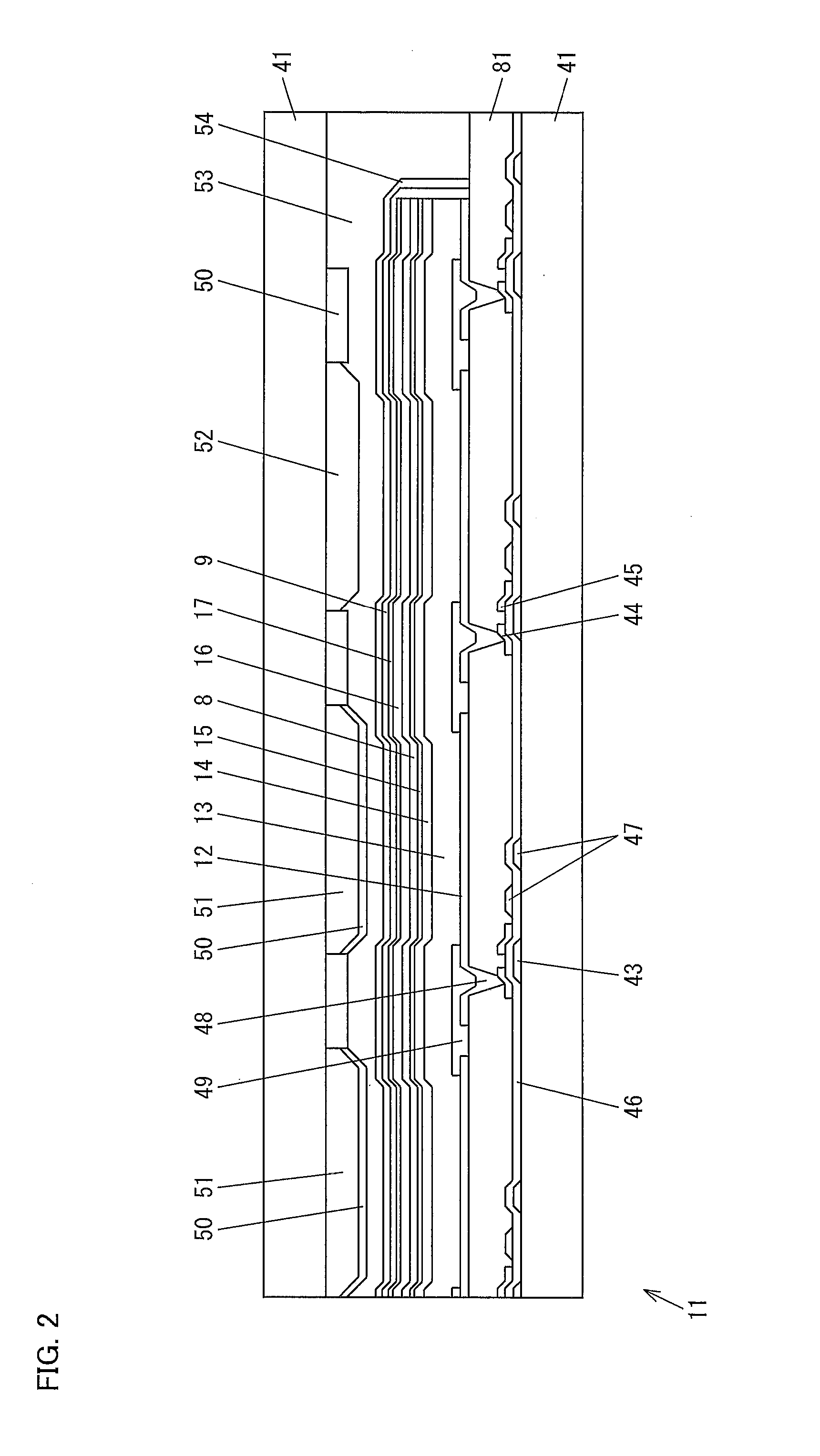Organic electroluminescence element, manufacturing method thereof, and organic electroluminescence display device
- Summary
- Abstract
- Description
- Claims
- Application Information
AI Technical Summary
Benefits of technology
Problems solved by technology
Method used
Image
Examples
embodiment 1
(Outline of Organic EL Element 11)
[0040]An organic electroluminescence element (organic EL element) in accordance with Embodiment 1 is arranged so that (i) a pair of electrodes (anode and cathode) and (ii) an organic layer provided between the pair of electrodes, which organic layer includes a light emitting layer, are provided between a pair of substrates. More specific arrangement will be described later with reference to FIG. 2. FIG. 2 is a cross-sectional view of an organic EL element 11.
[0041]As illustrated in FIG. 2, the organic EL element 11 includes a plurality of thin film transistors (TFTs) provided at predetermined intervals. Each of the plurality of thin film transistors includes, on an insulating substrate 41, a gate electrode 43, a drain electrode 44, a source electrode 45, and a gate insulating layer 46. Further, a connecting line 47 is provided between the insulating substrate 41 on the gate electrode 43 side and the TFT.
[0042]A planarization film 81 is provided on t...
embodiment 2
[0091](Outline of Organic EL Element 21)
[0092]As early described, since it is necessary that the host material for the first light-emitting layer 15a have hole transportability, the hole transportable material for the hole transport layer of the organic EL element employing a conventional blue phosphorescent light emitting material can be used, without any problems, as the host material for the first light-emitting layer 15a. As such, by using a hole transportable material as the host material for the first light-emitting layer 15a, the first light-emitting layer 15a can also serve as the hole transport layer 14. Similarly, since it is necessary that the host material for the second light-emitting layer 15b has electron transportability, the electron transportable material for the electron transport layer of the organic EL element employing a conventional blue phosphorescent light emitting material can be used without any problems, as the host material for the second light-emitting ...
example 1
[0143]A silicon semiconductor film was formed on a glass substrate by a plasma enhanced chemical deposition (plasma CVD) method, and was subjected to a crystallization process. Then, a polycrystalline semiconductor film was formed on the silicon semiconductor film (polysilicon thin film) which has been subjected to the crystallization process. Then, the polysilicon thin film was subjected to an etching process so that a plurality of island-shaped patterns were formed. Subsequently, silicon nitride (SiN) was formed, as a gate insulating layer, on the islands of the polysilicon thin film. After that, stacked layers of titanium (Ti)—aluminium (Al)—titanium (Ti) were sequentially formed as gate electrodes, and were patterned by the etching process. Source electrodes and drain electrodes were formed on the respective gate electrodes by use of Ti—Al—Ti staked layers. A plurality of thin film transistors were thus formed.
[0144]An interlayer insulating film having through holes was formed o...
PUM
 Login to View More
Login to View More Abstract
Description
Claims
Application Information
 Login to View More
Login to View More - R&D
- Intellectual Property
- Life Sciences
- Materials
- Tech Scout
- Unparalleled Data Quality
- Higher Quality Content
- 60% Fewer Hallucinations
Browse by: Latest US Patents, China's latest patents, Technical Efficacy Thesaurus, Application Domain, Technology Topic, Popular Technical Reports.
© 2025 PatSnap. All rights reserved.Legal|Privacy policy|Modern Slavery Act Transparency Statement|Sitemap|About US| Contact US: help@patsnap.com



